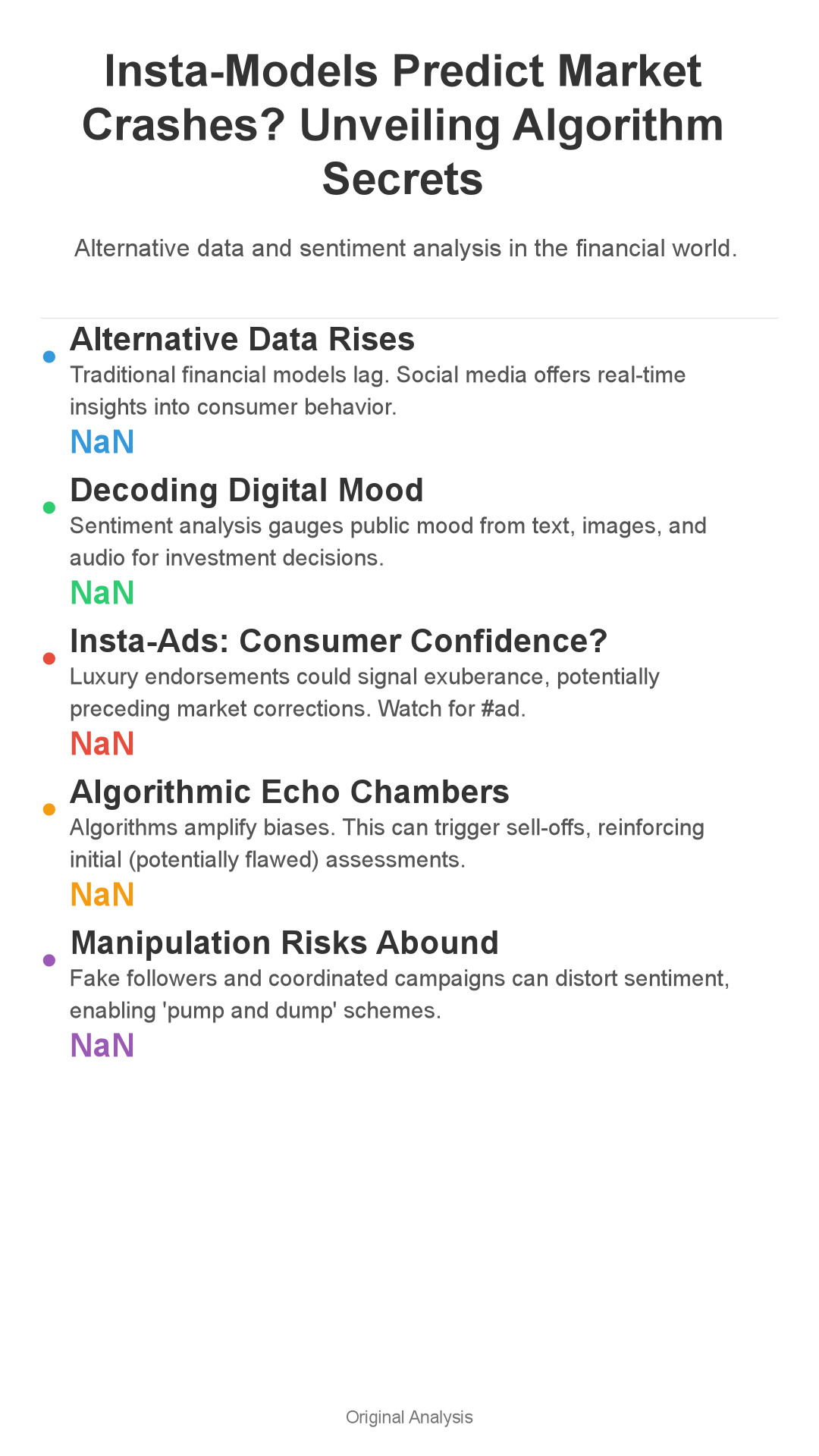
Could your Instagram feed be predicting the next stock market plunge? It sounds outlandish, but we'r
Ever scrolled through Instagram and wondered if those perfectly curated #sponsored posts were more than just pretty pictures? What if they’re actually whispering warnings of a looming stock market crash? The algorithmic rumors are swirling, and we’re diving deep. Buckle up and follow along – this could change how you see your feed!
We live in an age where data reigns supreme, and increasingly, that data originates from unexpected sources. Forget dusty financial reports – the freshest insights might be hiding in plain sight, right in your Instagram feed.
But can perfectly posed pictures and strategically placed product endorsements *really* predict the next market meltdown?
The Rise of Alternative Data & Sentiment Analysis in Finance
Traditional Models Meet the Modern World
For decades, financial analysts relied on established indicators: GDP growth, interest rates, and unemployment figures.
However, in our hyper-connected, social media-driven world, these metrics often lag behind the curve.
Decoding the Digital Mood Ring
Sentiment analysis algorithms are designed to gauge public mood. They analyze text, images, and even audio to determine if the overall feeling is positive, negative, or neutral.
This information is then used to inform investment decisions, theoretically enabling traders to react to market shifts *before* they become apparent in traditional financial data.
Beyond the Balance Sheet: Real-World Examples
The use of alternative data is already widespread. Credit card transaction data can reveal consumer spending habits.
Satellite imagery of parking lots can indicate the popularity of retail stores. And yes, social media activity is under increasing scrutiny.
Hedge funds are tracking Twitter mentions of companies, analyzing Facebook posts for consumer opinions, and even monitoring Reddit threads for early signs of emerging trends.
Insta-Model Endorsements as a Proxy for Consumer Confidence (and Potential Over-Optimism)
The Power of the #Ad
Luxury goods, travel experiences, and aspirational lifestyle brands thrive on Instagram. Influencer marketing is their lifeblood.
Perfectly curated feeds showcase a life of effortless elegance and abundance, enticing followers to buy into the dream.
Picture this: the market is booming, everyone feels wealthy, and Instagram is overflowing with ads for designer handbags, exotic vacations, and luxury cars.
A surge in endorsements for these types of products *could* signal heightened consumer confidence and spending – a period of economic exuberance. But history teaches us that these periods are often followed by corrections.
Could a proliferation of #ad posts be a leading indicator of an impending downturn?
The Lipstick Effect and Its Shadow
The “lipstick effect” suggests that during economic downturns, people tend to spend more on small luxuries, like lipstick, as a way to feel good without breaking the bank.
But what happens when the economy is *seemingly* healthy, but that “health” is fueled by unsustainable debt or inflated asset bubbles?
Are we measuring genuine economic well-being, or just surface-level exuberance fueled by the fear of missing out (FOMO)?
Algorithmic Biases and the Echo Chamber Effect
The Ghosts in the Machine
Algorithms are only as reliable as the data they’re trained on. If that data reflects historical biases or limitations, the algorithms will perpetuate them.
Amplifying the Noise
These biases can create feedback loops, amplifying existing market trends and potentially exacerbating crashes.
If an algorithm flags a surge in luxury endorsements as a potential warning sign, it might trigger a sell-off in certain stocks. This, in turn, reinforces the algorithm’s initial assessment, leading to further sell-offs.
Groupthink in the Grid
The increasing reliance on algorithmic trading systems also raises the risk of “groupthink.
” If multiple algorithms are trained on similar data and programmed to react similarly, they could trigger coordinated (and potentially disastrous) actions.
Imagine a scenario where a cluster of algorithms simultaneously identifies the same Instagram trend as a warning sign, leading to a mass exodus from the market.
Manipulating the System: The Potential for Misinformation and Market Manipulation
The Fake It ‘Til You Break It Strategy
Influencer marketing is notoriously susceptible to manipulation.
Fake followers, bots, and coordinated campaigns can artificially inflate the popularity of a product or brand, creating a false sense of demand. This makes it difficult to distinguish between genuine consumer interest and manufactured hype.
Pump, Dump, and Post: The Social Media Scam
The possibility of orchestrated “pump and dump” schemes leveraging social media sentiment analysis is a real concern.
Imagine a group of individuals coordinating a campaign to promote a specific stock on Instagram, using fake accounts and paid influencers to generate buzz.
Monitoring and preventing market manipulation in the age of social media finance presents significant regulatory challenges. How do you track and identify coordinated campaigns across multiple platforms?
How do you distinguish between genuine opinions and paid endorsements? And how do you enforce regulations in a global, decentralized environment?
Conclusion
We’ve journeyed down the rabbit hole, exploring the surprising potential for Insta-model endorsements to be analyzed as a potential indicator of market trends.
We’ve uncovered the role of sentiment analysis, algorithmic biases, and the ever-present threat of manipulation.
So, what do you think? Is the future of finance really in the hands of algorithms interpreting influencer posts? Should regulators be paying closer attention to the intersection of social media and the stock market?
Let us know your thoughts in the comments below!
And if you found this interesting, consider subscribing to our newsletter for more wild facts, weird science, and internet rabbit holes delivered straight to your inbox!

Enjoyed this? Check out our YouTube channel for video versions!
Enjoyed this? Check out our YouTube channel for video versions!



